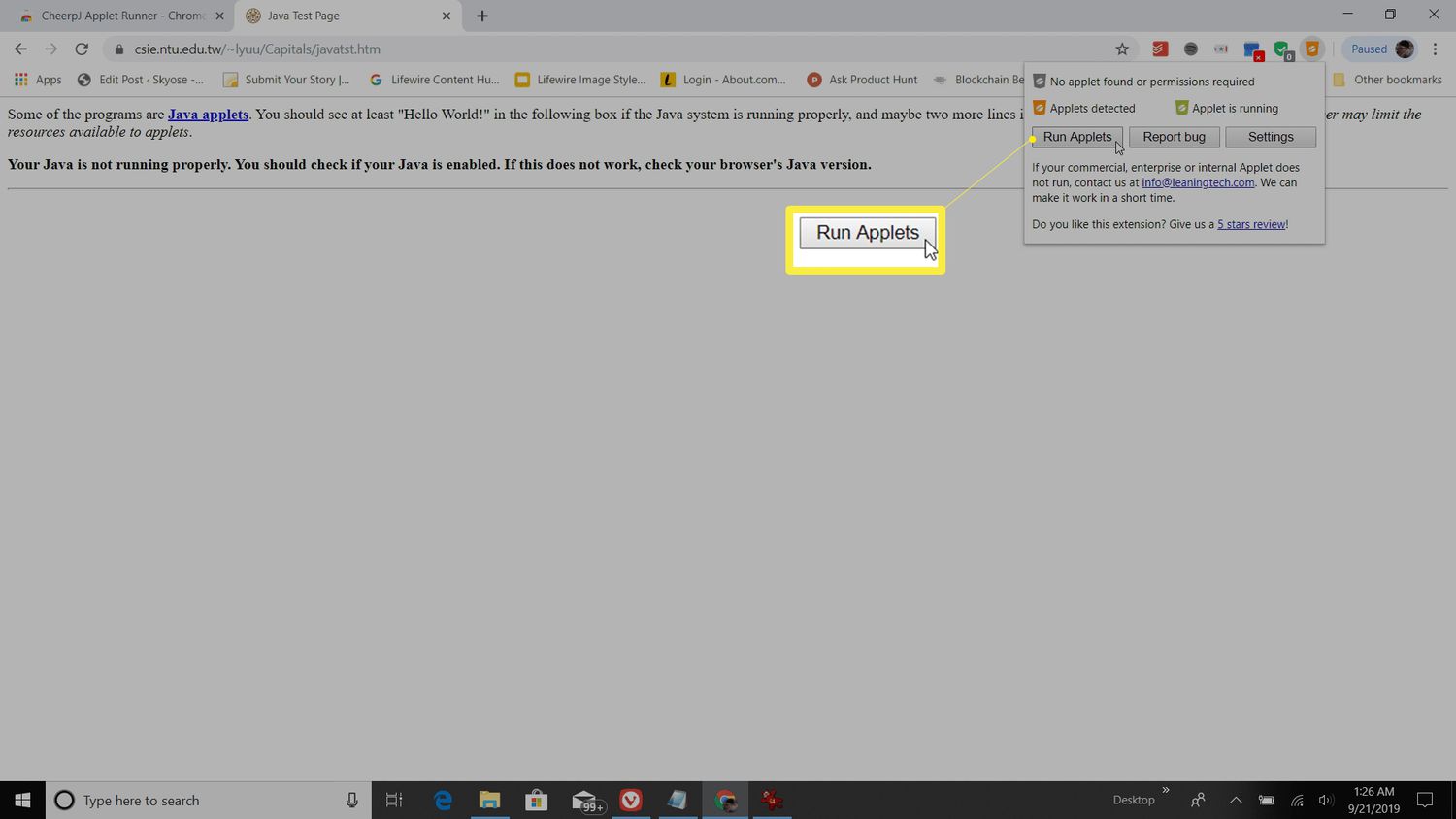Introduction
Google Chrome, the widely popular web browser developed by Google, has revolutionized the way we browse the internet. With its sleek interface, robust security features, and seamless integration with Google's ecosystem, Chrome has become the browser of choice for millions of users worldwide. However, one notable absence in Google Chrome's repertoire of supported technologies is Java.
Java, a versatile and powerful programming language, has been a mainstay in the world of web development and software applications for decades. Its ability to run on any platform makes it a valuable tool for developers, enabling them to create cross-platform applications that can run on diverse operating systems. Despite its widespread use and versatility, Google Chrome has chosen not to support Java, leaving many users wondering about the reasons behind this decision.
In this article, we will delve into the history of Java support in Google Chrome, explore the reasons for its absence, and discuss alternative solutions for users who rely on Java for various applications. By understanding the intricacies of Java support in Google Chrome, users can make informed decisions about their browsing experience and explore alternative options to fulfill their Java-related needs. Let's embark on a journey to unravel the mystery behind Google Chrome's lack of support for Java and discover the alternatives that can fill this void.
History of Java support in Google Chrome
When Google Chrome was first launched in 2008, it boasted a fast and efficient browsing experience, setting a new standard for web browsers. At that time, Java applets were widely used to enhance web applications with interactive and dynamic content. As a result, Google Chrome initially included support for Java applets to ensure compatibility with a wide range of websites and online services.
However, as the web landscape evolved, so did the security and performance considerations associated with supporting Java in web browsers. Java applets, which were once a common feature on websites, began to fall out of favor due to their susceptibility to security vulnerabilities and their impact on browser performance. This shift in the industry's approach to web development prompted Google to reevaluate its stance on supporting Java in Chrome.
In September 2015, Google announced its decision to phase out support for NPAPI (Netscape Plugin Application Programming Interface) plugins, including Java applets, in Chrome. This move was driven by the desire to improve browser security, stability, and performance, as NPAPI plugins were known to pose significant security risks and often led to browser crashes.
Subsequently, Google Chrome gradually reduced its support for NPAPI plugins, including Java, ultimately leading to the complete discontinuation of NPAPI support in Chrome by the end of 2015. This marked the end of an era for Java applets in Google Chrome, as the browser shifted its focus towards modern web technologies and standards that prioritized security, performance, and user experience.
The decision to discontinue support for Java applets in Google Chrome reflected the broader industry trend of moving away from NPAPI plugins in favor of more secure and efficient web technologies. While this transition may have posed challenges for users who relied on Java for specific applications, it paved the way for a more secure and streamlined browsing experience in Chrome.
As a result, the history of Java support in Google Chrome is characterized by a strategic shift towards modern web standards and away from legacy technologies that posed security and performance risks. This evolution reflects Google's commitment to advancing web technology while prioritizing the safety and satisfaction of Chrome users.
In the next section, we will delve into the reasons behind Google Chrome's decision not to support Java, shedding light on the factors that influenced this pivotal shift in the browser's development.
Reasons for Google Chrome not supporting Java
The decision by Google Chrome to discontinue support for Java can be attributed to several compelling reasons, each of which played a significant role in shaping the browser's development and user experience.
-
Security Concerns: Java applets, which were commonly used to deliver interactive content on websites, posed substantial security risks. They were susceptible to exploitation by malicious entities seeking to compromise users' systems through vulnerabilities in the Java runtime environment. By discontinuing support for Java applets, Google Chrome aimed to mitigate these security threats and protect users from potential exploits.
-
Performance Impact: Java applets often had a detrimental impact on browser performance, leading to sluggishness, unresponsiveness, and frequent crashes. This not only undermined the user experience but also posed technical challenges for browser developers. By moving away from supporting Java applets, Google Chrome sought to enhance the overall performance and stability of the browser, ensuring a smoother and more reliable browsing experience for its users.
-
Transition to Modern Web Standards: The web development landscape underwent a significant transformation, with a shift towards modern web standards and technologies that prioritized security, performance, and cross-platform compatibility. As the industry embraced HTML5, CSS3, and JavaScript for creating rich and interactive web experiences, the relevance of Java applets diminished. Google Chrome's decision to discontinue support for Java aligned with this industry-wide transition, allowing the browser to focus on embracing modern web standards while phasing out legacy technologies that no longer aligned with the evolving needs of web developers and users.
-
User Experience and Convenience: The absence of Java support in Google Chrome prompted developers and website owners to explore alternative solutions for delivering interactive content, thereby fostering innovation and creativity in web development. Additionally, by streamlining its support for web technologies, Google Chrome aimed to simplify the browsing experience for users, reducing the complexity associated with managing and updating Java runtime environments within the browser.
-
Embracing Alternative Technologies: In lieu of Java applets, web developers and content creators turned to alternative technologies such as HTML5, JavaScript frameworks, and browser extensions to achieve similar functionalities without relying on Java. This shift towards alternative technologies empowered developers to create compelling web experiences while aligning with the evolving standards and best practices endorsed by the web development community.
By considering these reasons, it becomes evident that Google Chrome's decision not to support Java was driven by a strategic alignment with industry trends, a commitment to enhancing security and performance, and a focus on delivering a modern and seamless browsing experience for its users. While the absence of Java support may have posed initial challenges for some users, it ultimately paved the way for a more secure, efficient, and innovative web ecosystem within Google Chrome.
Alternatives to using Java in Google Chrome
In the absence of native support for Java in Google Chrome, users seeking to access Java-based content or applications have several viable alternatives at their disposal. These alternatives not only address the void left by the discontinuation of Java support but also offer enhanced security, performance, and compatibility with modern web standards. Let's explore the alternatives that users can leverage to fulfill their Java-related needs within the Chrome browser.
-
Browser Extensions: One of the most effective alternatives for accessing Java content in Google Chrome is the use of browser extensions. Specifically, extensions such as "IE Tab" or "IE Tab Classic" allow users to emulate Internet Explorer within Chrome, providing compatibility with Java applets and other legacy technologies. By leveraging these extensions, users can seamlessly access Java-based content without compromising the security and performance of their browsing experience.
-
Java Web Start: Java Web Start, a technology provided by Oracle, enables users to launch standalone Java applications directly from a web browser. While Google Chrome does not natively support Java Web Start, users can utilize alternative browsers, such as Mozilla Firefox or Internet Explorer, to initiate Java Web Start applications. This approach allows users to harness the power of Java-based applications while maintaining a secure and efficient browsing environment in Chrome.
-
Remote Desktop Solutions: For scenarios where Java-based applications or content are integral to users' workflows, employing remote desktop solutions can offer a seamless workaround. By accessing a remote desktop environment that supports Java, users can interact with Java applications and content while using Google Chrome as their primary browser. This approach ensures that users can leverage Java functionality without compromising the security and performance benefits offered by Chrome.
-
Migration to Modern Web Technologies: In many cases, the transition away from Java applets presents an opportunity for developers and content creators to embrace modern web technologies. By migrating Java-based functionalities to HTML5, JavaScript, or other contemporary frameworks, developers can deliver interactive and dynamic content that aligns with the evolving standards of web development. This not only ensures compatibility with Google Chrome but also enhances the overall user experience by leveraging the capabilities of modern web technologies.
-
Vendor-Specific Solutions: Some vendors and service providers offer tailored solutions for accessing Java-based content within web browsers. These solutions may involve the use of dedicated browser plugins or specialized web interfaces that facilitate the seamless execution of Java applications. Users seeking to access specific Java-dependent services or applications should explore the offerings provided by the respective vendors to identify compatible solutions for use within Google Chrome.
By embracing these alternatives, users can navigate the absence of native Java support in Google Chrome while maintaining a secure, efficient, and versatile browsing experience. Each alternative presents unique advantages and considerations, empowering users to access Java-based content and applications in a manner that aligns with the evolving landscape of web technologies and standards.
Conclusion
In conclusion, the absence of native support for Java in Google Chrome reflects a strategic alignment with evolving web standards, security considerations, and the pursuit of a streamlined browsing experience. The decision to discontinue support for Java applets was driven by a combination of security concerns, performance optimization, and the industry-wide transition towards modern web technologies. While this shift may have initially posed challenges for users accustomed to Java-based content and applications, it ultimately paved the way for a more secure, efficient, and innovative web ecosystem within Google Chrome.
As users navigate the absence of native Java support in Google Chrome, they can leverage a range of viable alternatives to access Java-based content and applications. From browser extensions that emulate legacy environments to the migration of Java functionalities to modern web technologies, users have the flexibility to adapt to the evolving landscape of web development while maintaining compatibility with Google Chrome.
Furthermore, the discontinuation of Java support in Google Chrome underscores the browser's commitment to prioritizing user security, performance, and the adoption of contemporary web standards. By embracing alternative solutions and exploring the diverse options available, users can continue to access Java-based content and applications while benefiting from the enhanced security and efficiency offered by Google Chrome.
Ultimately, the evolution of web technologies and the strategic decisions made by Google Chrome have reshaped the browsing experience, encouraging innovation, and driving the adoption of modern web standards. While the absence of native Java support may mark a significant transition for users, it also signifies the browser's dedication to delivering a secure, efficient, and forward-looking platform for users to explore the boundless possibilities of the web.
In essence, the discontinuation of Java support in Google Chrome represents a pivotal step towards embracing the future of web development and browsing, empowering users to navigate the evolving landscape of technology while experiencing the best that the web has to offer.

























